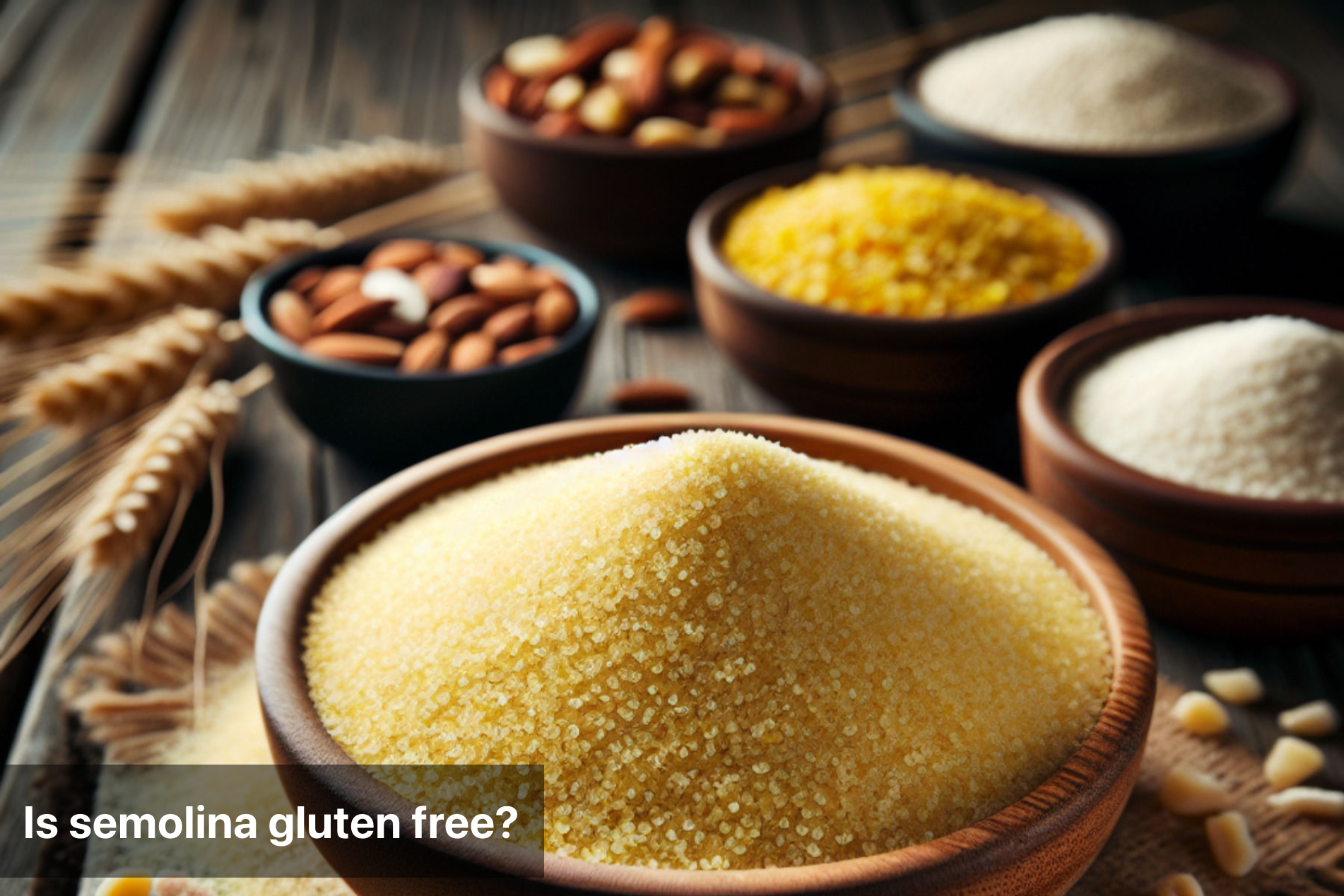
Is semolina gluten free?
Semolina is a common ingredient in many dishes, but is it gluten-free? Let's delve into this topic by exploring what semolina is and its relationship with gluten and the significance of gluten-free diets.
Semolina is a coarse flour made from durum wheat, commonly used in pasta, bread, and desserts. It has a distinctive texture and nutty flavor, adding depth to various recipes. However, when it comes to gluten content, semolina is not gluten-free. Gluten is a protein found in wheat, barley, and rye, making semolina unsuitable for individuals with gluten sensitivity or celiac disease.
Gluten-free diets have gained popularity due to the increasing awareness of gluten-related disorders. These diets are essential for managing conditions like celiac disease, wheat allergy, or gluten intolerance. By eliminating gluten-containing grains like semolina, individuals can alleviate symptoms, improve digestion, and promote overall well-being.
Understanding the role of semolina and its gluten content is crucial for making informed dietary choices, especially for those following gluten-free lifestyles. By prioritizing gluten-free alternatives, individuals can enjoy delicious meals while supporting their health and well-being.

Why avoid Semolina?
-
Celiac Disease: For those with celiac disease, gluten triggers an autoimmune response that damages the small intestine, leading to malabsorption of nutrients.
-
Non-Celiac Gluten Sensitivity: Individuals may experience digestive issues like bloating, gas, and abdominal pain when consuming gluten, even without having celiac disease.
-
Wheat Allergy: Some people may have a wheat allergy, causing symptoms ranging from skin rashes to anaphylaxis upon consuming gluten-containing products.
-
Chronic Inflammation: Gluten can contribute to chronic inflammation in individuals with sensitivities, potentially worsening conditions like arthritis.
-
Nutritional Deficiencies: Damage to the intestine in celiac patients can lead to deficiencies in vitamins and minerals, resulting in anemia and osteoporosis.
-
Gastrointestinal Disorders: Those with irritable bowel syndrome (IBS) may find that gluten exacerbates their symptoms, leading to discomfort.
-
Mental Health Issues: Some evidence suggests that gluten may be linked to mood disorders, contributing to anxiety and depression in sensitive individuals.
-
Weight Gain: Semolina is calorie-dense, and overconsumption can lead to weight gain if not balanced with physical activity.
Alternatives to Semolina for Gluten-Free Diets
-
Polenta: Made from ground corn, polenta is a versatile gluten-free alternative to semolina. It can be cooked to a creamy consistency or allowed to set and then sliced and grilled.
-
Almond Flour: Almond flour, a protein-rich and low-carb option, can be used as a replacement for semolina in baking recipes like cakes, cookies, and muffins.
-
Coconut Flour: With its subtly sweet taste and high fiber content, coconut flour is an excellent gluten-free substitute for semolina in baking and breading applications.
-
Rice Flour: Rice flour, finely milled from either white or brown rice, is a neutral-tasting gluten-free option for making pasta, bread, and baked goods.
-
Quinoa: Quinoa, a complete protein source, can be ground into flour and used in place of semolina for making gluten-free pasta, bread, and desserts.
-
Buckwheat Flour: Despite its name, buckwheat is not related to wheat and is naturally gluten-free. Buckwheat flour adds a nutty flavor and a nutritional boost to recipes.
-
Chickpea Flour: Also known as gram flour or besan, chickpea flour is a high-protein alternative to semolina and is commonly used in gluten-free cooking for dishes like socca and pakoras.
-
Tapioca Flour: Tapioca flour, derived from cassava root, is a light and starchy gluten-free flour that can be used in place of semolina for thickening sauces and creating a chewy texture in baked goods.

Semolina and Gluten: What You Need to Know
One of the burning questions addressed was, "Is semolina gluten-free?" The verdict is no; semolina contains gluten, making it unsuitable for individuals with gluten sensitivity or celiac disease. This crucial point underscores the importance of understanding food ingredients for dietary choices.
For those seeking gluten-free alternatives, we highlighted a diverse range of options, including almond flour, coconut flour, and chickpea flour. These substitutes allow individuals to enjoy similar textures and flavors in their favorite dishes without compromising dietary preferences.
While semolina adds richness to various dishes, its gluten content poses challenges for those with gluten intolerance. Being informed about such ingredients empowers individuals to make mindful choices for their health and well-being.
FAQs
-
Is semolina gluten-free?
No, semolina is not gluten-free as it is made from durum wheat, which contains gluten.
-
Can people with gluten intolerance or celiac disease consume semolina?
Individuals with gluten intolerance or celiac disease should avoid semolina due to its gluten content.
-
Are there any gluten-free alternatives to semolina?
Yes, there are gluten-free alternatives such as almond flour, coconut flour, and rice flour that can be used as substitutes for semolina.
-
How can I identify if a product contains semolina?
Check the ingredient list on the product packaging for "semolina" or "durum wheat," as these indicate the presence of gluten.
-
What dishes commonly use semolina?
Semolina is often used to make pasta, couscous, and desserts like semolina pudding.
This Blog post is an initiative by Lo! Foods, to provide accurate and Nutritionist / Doctor approved information related to Health. Lo! Foods is India's leading brand for Everyday Functional Foods. Foods designed for specific Health conditions or Needs. Lo! Foods also runs India's largest range of Low Carb Healthy Cloud Kitchens, under the brand names of Lo!, ProteinChef, ATH (All Things Healthy) and DiabeSmart.















Leave a comment
Your email address will not be published.